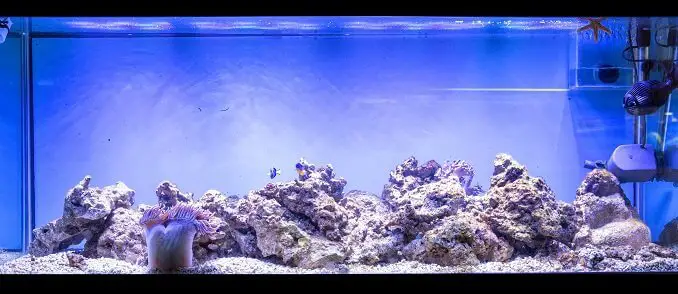
Choosing the right aquarium substrate is one of the most important aspects of maintaining a healthy aquarium. It might not be obvious how important the substrate is in your aquarium, and you may even assume it is there for only aesthetic purposes.
Do a little bit of background research about the fish and plants you want to have in your aquarium. That will give you an idea of what substrate you will need. We have listed our 10 favorite substrates and reviewed them below to make the choice a little easier for you. I have judged the substrates based on what their features are, what is good about the product as well as looking at what isn’t so good about the substrate.
Let’s have a little look at the different types of substrates out there and what plants and fish are most suited to thrive in these different substrates so you can make an informed decision.
Aquarium Substrates
When we talk about a substrate of some sort, the first thing that comes into our head is soil. Soil is used both for garden plants and aquarium plants, so it is pretty standard and common, wouldn’t you agree?
There are other substrates, however, that are appropriate for plants in an aquarium that make a change from aqua-soil. Let’s understand a little more about each one to help you make your decision.
Aqua-Soil
Most aqua-soil contains traces of volcanic rock minerals. This is a particularly ideal substrate for aquatic plants as their roots absorb all of the minerals from the soil.
The soil is porous. However, its particles come in all different shapes and sizes. You can buy soil so fine that it looks like sand. Other aqua-soils can look more like garden soil, big, chunky, and irregular. It is important you have an idea of the type of plants you want in your aquarium so that you know which one to go for.
Aquarium Soil is considered a ‘complete substrate’ meaning that it ticks all of the boxes and doesn’t need to be mixed with any other substrates. The only time you may add something to it is if you want a sprinkle of sand on the top for aesthetic purposes.
Fish That Like Aqua-Soil
The Discus fish do well in tanks with aqua-soil. Choose a fine, sandy-like soil if you wish to keep a school of Discus fish in your aquarium. The reason this species does especially well in a tank with aqua-soil is simply because of all the plants you can root in your aquarium when using the aqua-soil substrate.
Discus wants to have a lot of hiding places in their tank, so tall plants and bits of driftwood are perfect tank companions. You can add a sprinkle of sand in certain areas of the tank so that the fish can throw the sand about while they look for food. If you choose fine soil, sand isn’t necessary.
Plants That Like Aqua-Soil
The truth is, most aquarium plants will grow well in aqua soil. There are some exceptions, such as the Amazon frogbit. If plants such as the Amazon frogbit grow in a soil substrate they can actually rot.
Marbles
If you are looking to have a breeding tank then marbles are the substrate of choice for you. Marbles are a little less common than the rest of the substrates because they can be a real nightmare to clean. The more space you have between the substrate grains, in this case, marbles, the more dirt gets trapped.
Leaving dirt and debris between the marbles can lead to unhealthy tank water, which is due to an insufficient percentage of ‘good’ bacteria found in the water that is necessary to keep the ammonia levels down.
If you have a separate tank that is only for breeding purposes that contain egg-laying fish, you will see that the eggs settle between the gaps in the marble and stay there cozy and safe until the fry hatch.
Fish That Like Marbles
Danios are egg-scattering fish that will definitely benefit from having marbles in their breeding tank. I wouldn’t suggest having more than a couple of marbles in their regular tank though, as they prefer sand or fine gravel.
Plants That Like Marbles
Marbles are not a good idea for a substrate in a planted aquarium. If you simply cannot resist the look of marbles in an aquarium, stick to just having only a small section of your aquarium covered with marbles. For the plant side of the tank use a different substrate.
Marbles are a great base for tank accessories as they are sturdy and will stop them from moving about the tank. Driftwood, fake plants, and castles are all aquarium accessories that can be placed among marbles.
Marble Chips
This is a natural substrate that can change the chemistry of your aquarium water. Your tank may become more alkaline with a marble chip substrate, so make sure your plants and fish are happy with this PH level.
Water GH and KH levels rise slightly with marble chippings in the water. Marble chippings also release a lot of calcium into the water which sounds good but is actually really harmful to certain fish.
Fish That Like Marble Chips
Choosing a fish for an aquarium containing marble chippings isn’t too tricky. Look for a fish that likes alkaline water conditions, such as guppies, mollies, or paradise fish.
Plants That Like Marble Chips
If you want a tank full of marble chippings, you will probably have to forget about having any real plants in your aquarium. Unfortunately, most plants do not grow in marble chippings as the calcium levels in the water are just too high.
Gravel
Aquarium gravel is smooth and much softer than the gravel you and I are used to seeing. Gravel is probably most peoples ‘go-to’ substrate unless they have really delicate fish that don’t thrive in the gravel. Not all gravel is the same size either, so you can pick and choose the size of the grains depending on what look you prefer or what the plants and fish in your tank prefer.
Gravel allows water to flow through it, and therefore filters the water and prevents harmful gases from building up in pockets in the substrate. Gravel does get a little grubbier than other substrates because it collects algae and moldy food in all the nooks and crannies. Wash your gravel properly when cleaning your tank to maintain the health of the beneficial bacteria in your tank.
Fish That Like Gravel
Goldfish MUST be kept in a tank with gravel substrate. This is because sand can get stuck and cause blockages in the Goldfish internally. You should have no more than 2 inches of gravel in a goldfish tank. This is so that toxic glasses don’t build up in between the gaps in the gravel and poison the fish. Secondly, a substrate thickness of 2 inches is just right for you to clean without too much hassle.
Plants That Like Gravel
The Amazon Sword grows well in gravel or in aqua-soil. If you plant Amazon Sword in your gravel substrate make sure it is a finer, more compacted type of gravel so that it can root itself deep in the gravel.
Coral
Coral substrates are made of crushed up bits of corals, perfect for a reef aquarium environment. This is a very special substrate with quite a lot of responsibility. Coral substrates rectify PH issues in a tank that requires a higher PH level.
Coral is very porous and will actually dissolve in the water. It will only stop dissolving in the water once a PH level of about 7.4 is reached. You don’t need a lot of coral to change the chemistry of the water, so if you prefer you can mix the coral gravel up with another substrate.
Top Tip: Put just a little bit of coral gravel in the tank’s filter, this will be enough to increase the PH levels in the water and will keep the coral gravel out of sight if you don’t like the look of it too much.
Fish That Like Coral
Clownfish are probably one of the most popular reef fish available for aquariums. They are saltwater fish with rather a long life span. They can actually live up to 6 years when looked after properly.
The PH level in the water should be between 7.8-8.4 for optimal fish health. This is where having a crushed coral substrate really comes in handy. The coral will prevent the PH levels from dipping too low and potentially harming the fish.
Plants That Like Coral
You can grow Seagrass in tanks that are made up of mainly crushed coral substrate. The saltwater reef fish in your tank will also appreciate growing seagrass in their marine environment, as it gives them a place to cozy up and hide.
Can You Have a Substrateless Aquarium?
Technically, yes you can. You can even have plants such as Java Fern, Water Lettuce, and Hornworts that will thrive quite nicely in your substrates aquarium. Java fern only needs to attach to driftwood in order to survive.
Fish, however, do like some sort of substrate in their aquarium. Most fish either use the bottom of the tank while mating or while looking for food. Without a cozy environment in their tank, fish will get very distressed.
Comparison Table
| PRODUCT | FEATURES | LATEST PRICE |
|---|---|---|
1. CaribSea Eco Black Aquarium Substrate |
| Check Price |
2. Fluval Plant and Shrimp Substrate |
| Check Price |
3. SeaChem Aquarium Substrate |
| Check Price |
4. SeaChem Black Clay Gravel For Planted and Freshwater Aquariums |
| Check Price |
5. Pure Water Pebbles White Aquarium Sand |
| Check Price |
6. Active Flora Red Aquarium Substrate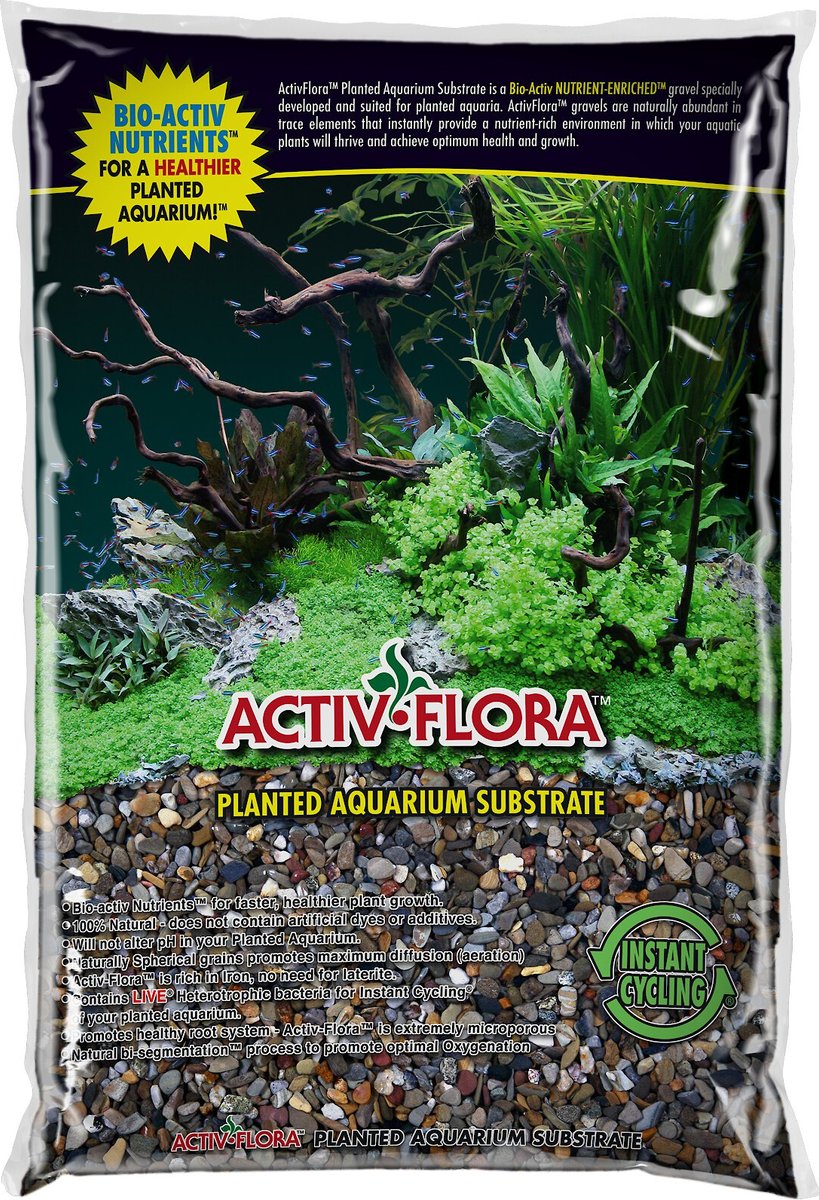 |
| Check Price |
7. CaribSea African Cichlid Mix Sahara Aquarium Gravel, 20-lb bag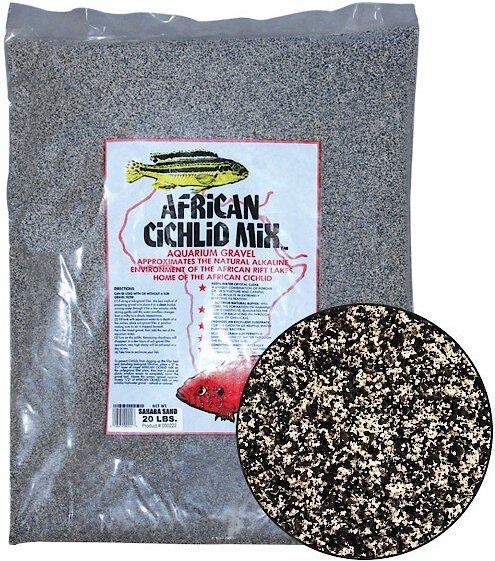 |
| Check Price |
8. GloFish Aquarium Gravel |
| Check Price |
9. CaribSea Crushed Coral Substrate |
| Check Price |
10. CaribSea Ocean Substrate |
| Check Price |
Our Best Aquarium Substrate Reviews and Comparisons
1. CaribSea Eco Black Aquarium Substrate

Product Highlights
This substrate is suitable for freshwater aquariums only. It is a mix of nourishing elements that will benefit your aquatic plants.
Features
- Suited for freshwater plants
- Encourages healthy root growth
- Contains elements including iron, calcium, magnesium, potassium, and sulfur
- No dyes or paints
- No artificial chemicals
- Highly porous grains
What We Like About CaribSea Eco Black Aquarium Substrate
This is one of the most highly recommended substrates for aquarium plants. One reason is that it shortens the tank cycle time dramatically. Another convenience is that you don’t need to rinse the gravel before using it in the aquarium.
Additionally, the bag comes with the substrate and is partially filled with water. This gives you immediate access to active bacteria active ready to put into the tank. There are different-sized grains in the bag, the smaller grains are shinier and give it a slightly shiny look overall.
What We Don’t Like About CaribSea Eco Black Aquarium Substrate
The CaribSea Eco Black aquarium substrate will change the water’s PH levels and can result in the water getting up to about a PH level 8. Shrimps and invertebrates do not like this substrate due to its ability to change the water’s PH levels. It might also cause your fish to get sick if they are not used to this type of substrate.
PROS
- No need to rinse before use
- Shortens tank cycle time
- Gravel has a nice shimmer to it
- Doesn’t contain dyes or chemicals
CONS
- Can harm fish
- Increases PH levels in the water
2. Fluval Plant and Shrimp Substrate

Product Highlights
This is another great substrate for a planted aquarium or if your aquarium has any fish that prefer a slightly acidic water PH level.
Features
- Volcanic soil
- Rich in minerals
- Good for aquatic plants
- Suitable for shrimps
- PH level neutral to acidic
What We Like About Fluval Plant and Shrimp Substrate
It is a beautiful dark chocolate color. If you are careful when adding water to your tank, the water will not get too cloudy from the dust in the aqua soil.
The substrate is full of minerals that aquarium plants crave. Shrimps and other fish that prefer an acidic PH level will love this product in their tank.
What We Don’t Like About Fluval Plant and Shrimp Substrate
The substrate crumbles and turns into sludgy mud if you overwork it or have bottom dwellers in the tank that throw it about a lot. It is a little bit crumbly and can make the tank water look dusty between cleanings.
Water hardness, also referred to as GH, softens as the substrate absorbs all the GH in the water. The aqua-soil is so light that it floats up to the surface of the tank.
PROS
- Great for plants and shrimps
- Packed with minerals
- Rich chocolaty color
- Doesn’t cloudy up the water too much
CONS
- Too lightweight
- Softens the water
3. SeaChem Aquarium Substrate

Product Highlights
The Flourite dark substrate by SeaChem is made out of clay gravel. It is natural and does not alter the PH levels in your aquarium.
Features
- Specifically for natural planted aquariums
- Suited for any aquarium environment
- Does not need replacing
- Is not chemically coated
- Gravel is not treated
- Doesn’t change the PH levels of the water
What We Like About SeaChem Aquarium Substrate
The substrate is irregular in size and slightly rough, allowing the roots of the plants to grip onto it more effectively. Its color is beautiful, luscious milk chocolate makes a nice change from the darker substrates on the market. Fortunately, little to no cloudiness is caused in the water when disturbed.
What We Don’t Like About SeaChem Aquarium Substrate
If you have fished with long delicate tails, such as male Bettas, this substrate will damage and sometimes even shred their beautiful long tails. To avoid this, the substrate needs to be covered with something softer to make it suitable for your bottom dwellers living in the tank.
The ‘dark’ is harder to rinse off than the fluorite ‘black’ and requires higher maintenance. You will find that it clouds up the water quite a lot if it isn’t rinsed properly before being added to the aquarium.
PROS
- Plant roots grip to the substrate
- Doesn’t contain artificial material
- Doesn’t change the waters PH level
- Vibrant color
CONS
- Makes water cloudy
- Damaged delicate fish
4. SeaChem Black Clay Gravel For Planted and Freshwater Aquariums

Product Highlights
Another flourite substrate from SeaChem, but this time we are looking at the black clay. Let’s see how much it differs from dark fluoride clay.
Features
- Gravel substrate
- Suitable for all freshwater aquarium environments
- Do not need laterite for this substrate
- Can be mixed with other gravels
- Not chemically coated or treated
- Doesn’t change the PH of the water
What We Like About SeaChem Black Clay Gravel
If you cure the gravel in sunlight you will reduce cloudiness in the water. Plants are really easy to root and stay in place in the black clay gravel, so no need to use root anchors. The color is really special and stands out next to plants and colorful fish.
What We Don’t Like About SeaChem Black Clay Gravel
It requires a little bit of effort on your part to prepare this product including washing and baking in the sun, which will take a few hours. You will need to cover the gravel with softer sand if you have bottom-dwelling fish. Although large plants stay put in the soil, small plants find it hard to root in the substrate and need to be weighed down.
PROS
- Vibrant color
- Doesn’t cloud the water
- Doesn’t contain chemicals
- Lasts the lifetime of your aquarium
CONS
- Small plants struggle to root in it
- Bottom dwellers do not like the substrate
5. Pure Water Pebbles White Aquarium Sand

Product Highlights
Moving on to a more fish-friendly substrate, this sand is alive and full of natural bacteria that will instantly cycle your aquarium.
Features
- Maintains PH levels
- Contains cobalt, zinc, molybdenum, and strontium
- Removes nitrogenous waste
- Bacteria found in this sand is naturally found on the ocean floor
- Cichlids love this substrate
What We Like About Pure Water Pebbles White Aquarium Sand
The bacteria are activated and preserved naturally. The sand comes with water in the packet to maintain the natural active bacteria. Any initial cloudiness settles after about 24 hours with the help of a good filter. The ammonia levels in the water will reduce dramatically within a day or so, which really helps cycle a newly set up tank.
What We Don’t Like About Pure Water Pebbles White Aquarium Sand
The bacteria can cause an unavoidable ‘rotten egg’-like smell in the tank. The cloudiness takes a long time to settle without a good filtering system, so beware. Bigger tanks require much more weekly and monthly maintenance to keep the sand clean. This sand will create a messy and dirty-looking appearance in the tank all the time if you have bottom-dwelling fish that will swim around in the substrate.
PROS
- Full of healthy bacteria
- Lowers ammonia levels
- Perfect for Cichlids
- Rich in zinc
CONS
- Looks ‘messy’ in larger tanks
- High maintenance
6. Active Flora Red Aquarium Substrate

Product Highlights
The Active Flora aquarium substrate is made of bioactive and nutrient-rich gravel. It naturally contains trace elements that aquatic plants need to flourish.
Features
- 100% natural
- No dyes or additives added to the substrate
- Doesn’t alter the PH of your aquarium
- Iron rich
What We Like About Active Flora Red Aquarium Substrate
It is a really unique burnt copper color that adds depth to the aquarium. The gravel is really easy to clean and doesn’t collect debris between the grains as much as other substrates on the market.
Plants stay in place and root down well in the gravel. Fish do not dig up the plants. If your aquarium contains both burying fish and aquatic plants then they should live happily together.
What We Don’t Like About Active Flora Red Aquarium Substrate
The color of the gravel stains the aquarium, so you may find the water is always slightly tinted. Prompts the growth of algae and will leave the tank looking ‘dirty’ all the time.
PROS
- Colorful
- Easy to clean
- Fish do not disturb the plants
- Easy to plant
CONS
- Clouds the water
- Tank looks dirty
7. CaribSea African Cichlid Mix Sahara Aquarium Gravel, 20-lb bag

Product Highlights
The live bacteria in the gravel stabilizes the tank quickly and keeps the ammonium levels down during water changes.
Features
- Contains live bioactive ‘good’ bacteria
- Removes nitrogenous waste
- Restores organic balance
- Colorful and unique
What We Like About Bio-Active Cichlid Gravel
The substrate helps in cycling a new tank. The rocks and shells are all mixed together to make a unique-looking substrate. You can combine this gravel with another substrate of your choice to create the perfect mix for your tank.
What We Don’t Like About Bio-Active Cichlid Gravel
The water will be cloudy for a number of days after putting this product into the tank. This can’t be avoided as the healthy bioactive bacteria cover the rocks. You don’t want to wash the gravel before otherwise, it will wash all of the bacteria away. This is the best practice for saltwater tanks but much less effective in freshwater tanks.
So consider what types of fish you are going to have in the tank because this product is very rough and jaggery, delicate fish will get bruised by the substrate.
PROS
- Great for saltwater tanks
- Helps cycle the tank faster
- Looks beautiful
- Easy to clean
CONS
- The gravel is very rough
- Cloudy water is unavoidable
8. GloFish Aquarium Gravel

Product Highlights
This gravel is designed with aesthetics in mind. If you are looking for a striking substrate, give this one a go.
Features
- Comes in different color options
- Fluorescent accent
- Stands out under blue lighting
What We Like About GloFish Aquarium Gravel
The gravel glistens under blue light. No matter what color you get, the rocks are vibrant and stand out. It doesn’t take long to rinse off any dust. One bag is the perfect amount for a 5-gallon fish tank.
What We Don’t Like About GloFish Aquarium Gravel
The gravel isn’t 100% natural and sensitive fish will suffer being in a tank with this gravel. The gravel is artificial so it does not get its color naturally. Therefore, the paint will chip over time and look messy. The paint is extremely toxic to aquatic fish. It will not help cycle your tank as it lacks any of the necessary healthy bacteria.
PROS
- It looks wonderful
- Glows in blue light
- Comes in different colors
- 1 bag for a 5-gallon tank
CONS
- Doesn’t assist with tank cycling
- Paint is toxic
9. CaribSea Crushed Coral Substrate

Product Highlights
The CaribSea crushed coral is packed with aragonite with immense buffering capacity.
Features
- Full of aragonite
- An economical performer
- Contains calcium and magnesium
- Reduces fish stress by mimicking reef habitat
What We Like About CaribSea Crushed Coral Substrate
The crushed coral brings the water PH up to a healthy level for plants and animals that are naturally found in coral reefs. It dissolves until it reaches a PH level of 7.4, once that PH level is achieved the coral stops dissolving.
You can use this product as your substrate to improve your water quality. Just put a few scoops in your filter and watch the water improve day by day.
What We Don’t Like About CaribSea Crushed Coral Substrate
You will have to rinse and drain the crushed coral about 30 or 40 times to get the substrate clean enough for your tank. There is a lot of fine, dusty coral in the bag that must be washed away or else it will make the water murky.
A 10 lb bag will not be enough substrate for a large tank once the dust is washed away, so be sure to purchase a little more than you think you need, just to be on the safe side.
PROS
- Effectively alters PH levels
- Can be used as a water treatment
- Reef animals love it
- Full of calcium
CONS
- Very dusty
- Suitable for coral reef marine life only
10. CaribSea Ocean Substrate

Product Highlights
Sand with its own natural bacteria is really the best way to recreate a natural sea life environment. CaribSea Ocean Substrate is a sandy delight that gets your fish feeling at home in no time.
Features
- 1000 times more natural bacteria than regular sand substrates
- Doesn’t require pre-washing
- Creates a thriving aquarium in minutes
What We Like About CaribSea Ocean Substrate
The sand is packaged moist and ready for the aquarium. Two bags will fill a large 75-gallon aquarium. The sand doesn’t move about on the bottom of the tank without being disturbed by bottom dwellers so there is no need to worry about the tank getting messy. Your tank will cycle quickly as the bacteria is already activated when you are ready to put it to work as soon as the substrate arrives.
What We Don’t Like About CaribSea Ocean Substrate
The sand clouds up the tank, especially because you are not supposed to rinse it beforehand. You might need to turn off your water pumps for a while after introducing the sand to the tank as it will create foam and runs the risk of the tank overflowing. Small disturbances in the sand cause the water to fog up quite a lot.
PROS
- Cycles your tank quickly
- One bag goes a long way
- The sand is nice and heavy
- Soft enough for delicate fish
CONS
- Can’t be prewashed
- Sand clouds the water when disturbed
Final Verdict
The CaribSea Black aquarium gravel is the winner. It is suitable for both plants and fish and looks great when topped off with a softer substrate such as sand if you have delicate fish. It is the perfect substrate for aquariums that have both plants and fish, so you are not restricted to what you put in your aquarium.
What substrate sounded the best to you? Regardless of what you choose, we want to help you maintain a healthy and thriving aquarium. Keeping the substrate in a good condition is a great start, so we thought we would advise you on how to clean your substrate and which one requires the least maintenance.
Aquarium Substrates: Which One is Easiest to Clean?
Now we will cover the most frustrating part of owning an aquarium, the cleaning. If this is a massive chore for you that you struggle to find the motivation to do then choosing an easy to clean substrate is going to be really important.
There are a few tell-tale signs that your substrate is due for a cleaning. Look out for any algae growing on the surface or in between rocks and gravel. Is the substrate discolored? Does it look like it’s changed texture? Does it smell? Pay attention to your substrate because it plays a big role in keeping your aquarium healthy and livable.
Cleaning Gravel
Gravel isn’t too tricky to clean. You do, however, need to make sure you wash it properly before you put it in the aquarium as it gets extremely dusty. The gravel should be cleaned every time you clean your aquarium and perform partial water changes, maybe once per week or fortnightly, depending on the fish you have in the tank.
You can use a vacuum to pick up debris from in between the gravel. Stir the gravel up a bit with your fingers to ensure you are getting to all the spots necessary. If you don’t have a vacuum, you can siphon it, or you can remove it and wash it by hand. Washing it by hand will get it very clean, maybe even too clean, so be sure to keep a cup or two of gravel aside unwashed. Here is how to wash gravel by hand.
- 1. Remove the fish and decorations from the tank.
- 2. Remove some of the water by pouring it into another bucket so that the water levels are lower and easier for you to put your hands in.
- 3. Fill up 2 cups with gravel and put it aside, this will be the gravel that you keep ‘dirty’ so that you don’t wash off all of the good bacteria.
- 4. Scoop the remaining gravel out of the tank without disturbing any plants and put it into a bucket.
- 5. Wash the gravel in the bucket with a hose until the water runs clear.
- 6. Gently put the gravel, accessories, and fish back into the tank.
The above steps take a much longer time than using a vacuum, but at least your tank can be cleaned well even if you are missing some equipment.
Cleaning Sand
Introducing sand sifters into your aquarium will really help keep the sand looking bright and vibrant, it will also reduce the amount of time you spend cleaning out your aquarium sand. Aquarium snails and sand sifting gobies are good little cleaners for you to introduce into your aquarium to help you out.
The biggest issue with sand is that water doesn’t flow through it as it does with gravel, meaning harmful gas gets trapped under the sand in gas pockets that can be bad news for your fish. If you don’t have any sand sifting fish in your tank you will need to move the sand around yourself.
Watch out for black sand! Black sand means anaerobic bacteria have built up in the sand, causing it to leave a bad smell. You are less likely to get black sand if you keep the substrate thickness to less than 2.5 cm. You should move the sand about with your fingers every now and then and clean the sand with a siphon or gentle vacuum to freshen it all up.
Top Tip: Only use special aquarium sand in your tank, using sand that you have brought home from the beach is not a good idea, neither is buying cheap reptile sand from the pet store.
Cleaning Aqua-Soil
Cleaning aquarium soil can be very messy. Aqua-soil actually doesn’t need to be washed before adding it to the aquarium. It really doesn’t need to be messed with much once it is in your tank either.
If you don’t have bottom dwellers in your tank that naturally sift through and graze on the substrate, you should rake the soil now and then, or run your fingers along the bottom of the aquarium. This will make a big mess, so do it before a routine tank clean.
Cleaning Coral
The coral substrate should be treated a bit like gravel, the only difference is that it’s much chalkier, so knocking the grains together will cause the water to cloud up. Vacuuming is your best option as it won’t disturb the coral too much.
Cleaning Marbles
Because marbles are probably going to be kept in a very small section of the tank, you should remove them and wash them thoroughly by hand, just as you would any other tank accessory. If the whole of your tank floor is covered with marbles (i.e. in a breeding tank) remove all the marbles and rinse them off. When you place them back into the tank, add bacterial supplements, and make sure the tank is cycled before you introduce fish back into the tank to breed.
And the Winner Is…
Which one do you think is the easiest to clean? We have chosen gravel, yet again as our winner. It allows the most amount of water to flow through it. So although it will have a collection of plant debris and fish waste stuck in between the stones, it prevents the build-up of any harmful gases and bacteria.
Gravel also comes in many shapes, sizes, and colors. It is much easier to find naturally colored gravel such as red, black, or white gravel that hasn’t been exposed to any chemicals or dyes than it is to find sand or coral substrates that are kept natural.
Substrate FAQ
If you still have some unanswered questions about all the different substrates to choose from, this section should hopefully make everything clearer for you.
Q: How much gravel do I need for my aquarium?
A: You should look to fill up your tank with gravel to a depth of 2.5 inches. Any more than that will be hard to clean, and less than that will look very sparse.
Q: Why has the substrate changed the PH level of my water?
A: Just like we mentioned earlier when talking about coral substrates, there are other substrates that chemically alter the PH level of the water too. Take gravel, for instance, there are certain gravels that are covered with a calcium powder that will increase the PH level in the water. If you have a substrate that has been chemically processed, that too can change the PH levels in the water.
Q: What is a siphon?
A: A siphon is like a vacuum that sucks up dirty water from between the grains of the substrate. It will remove some of the water in your tank, and when you are done you will be left with a tank that is about 30% less full.
You should siphon on a day that you plan on doing a partial water change. Sand will get sucked up into the vacuum if you aren’t careful, however, gravel and other larger substrates won’t be moved.
Q: Will the substrate harm my fish?
A: Yes, the wrong substrate will harm your fish. If you have a tank full of soft-bellied fish, you don’t want to be filling the tank up with a rough substrate as they will get bruised easily.
As we mentioned earlier, a substrate that alters the PH levels is also bad for your fish because it could make the water too alkaline or acidic for their liking.
Q: I have heard of inert substrates, but am not sure that they are.
A:Whenever you hear of a substrate being referred to as ‘inert’ it means that it won’t change the PH level of the water, or alter the chemistry in any way.
Inert substrates are typically chosen depending on how they look or their texture. If you have fish in your tank that like soft water environments, look for a substrate that is inert.
Q: Does it matter if I mix up sand and gravel together?
A: It isn’t the best idea to mix gravel and sand together, the reason being that they are different in densities. They won’t remain to look attractive nor will they stay mixed for very long. The sand sinks to the bottom of the tank while gravel will sit on top of the sand.
Q: I want to change my substrate, how do I go about doing that?
A: The size of the job really depends on if you have plants rooted in the substrate and what substrate you currently have. If you have a lot of plants in your aquarium, the best way to change the substrate is in stages.
Siphon the substrate out of the tank that doesn’t have any plants attached to it and replace it with the new substrate after it has been washed properly.
Once that is done you should replace the water that you sucked up with the siphon and wait a week or so before removing the plants and the remaining old substrate. This is to be certain the fish in the tank aren’t put under too much stress due to a large water change.


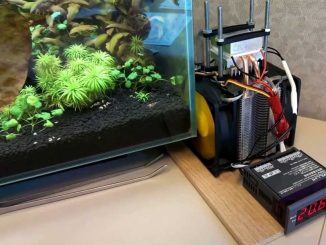
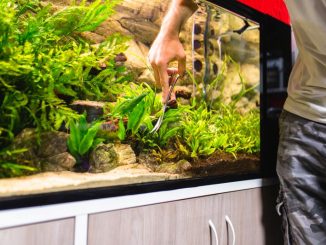
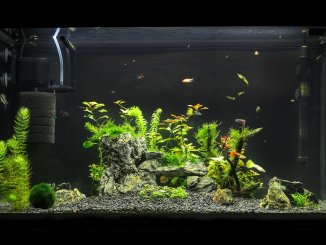
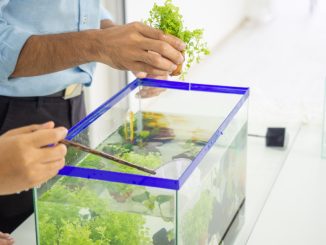
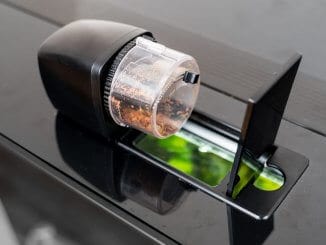
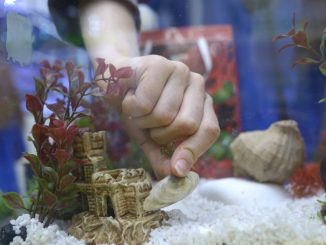
I want to put gravel in my tank but how to plant aquarium plants in gravel?